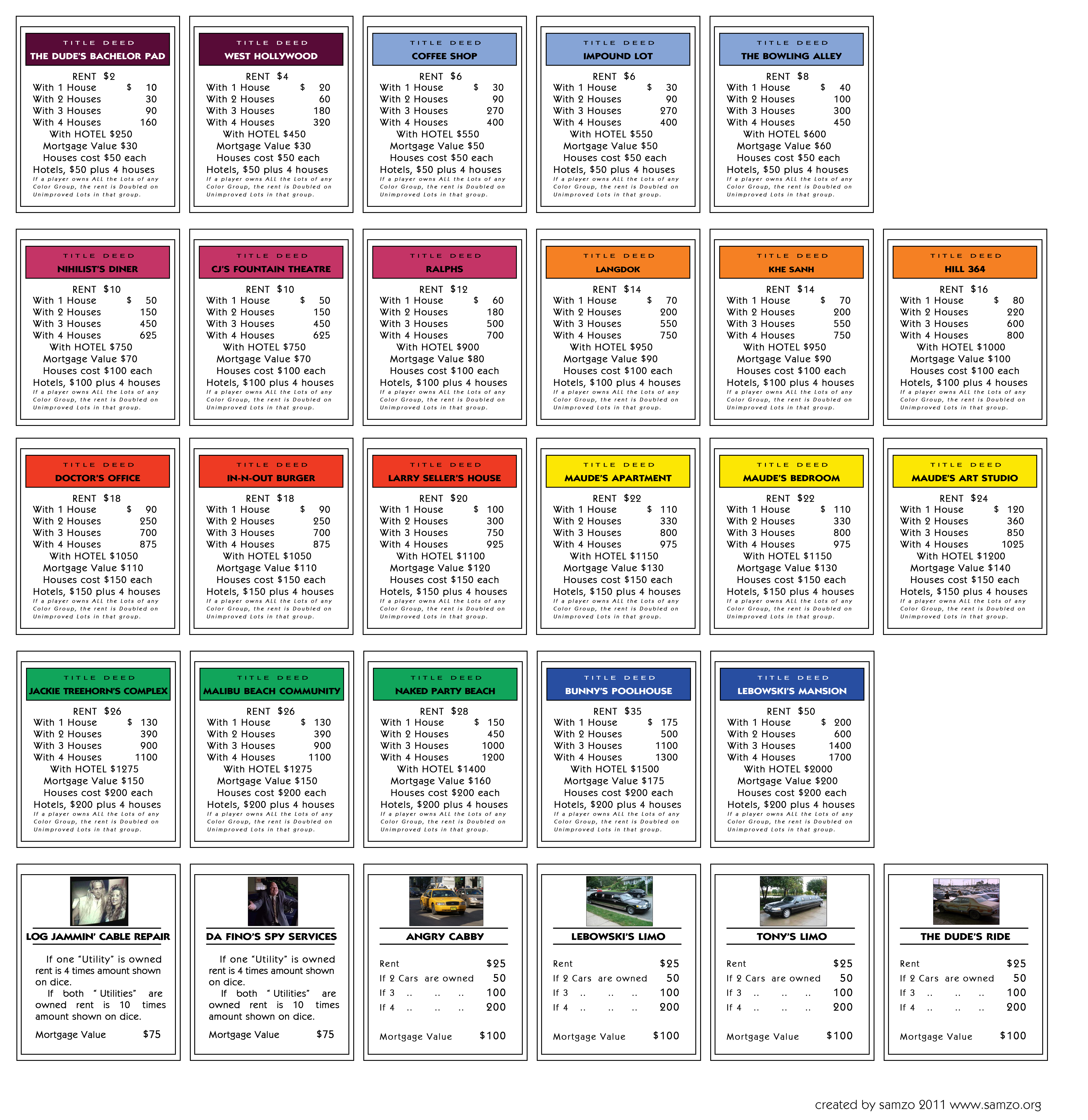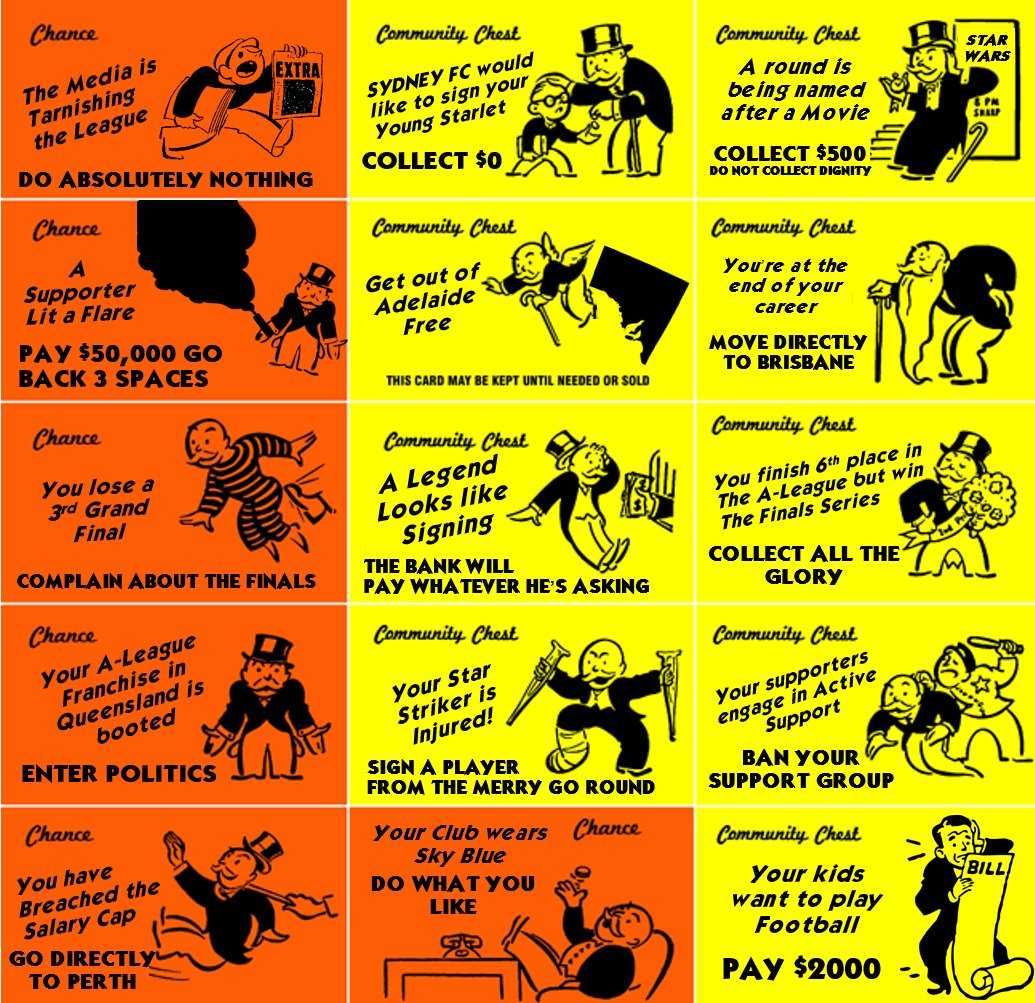

This way, players still have a variety of choices for trading. Play stops when someone gets $10,000.įor a 3-player game, the play is mostly the same, except that a 4th discard pile is created where the 4th player would be. The deal now passes to the left and the new dealer shuffles and re-deals the cards. Remember that any person with a Chance card, other than the person who went out, scores $0 for the round. To score, count the values of each person's hand. Before scoring, move all excess cards away. The player who goes out gets the reward of the top 5 cards from the draw pile, and they may use these cards if they help their hand. On the next turn, excess cards are discarded and the player announces that they are going out.
#MONOPOLY CARDS FULL#
Discard to go out - If a player has a full "color-group" with houses (if any) in order and no unmatched property or house cards - the player may go out.The turn ends by discarding excess cards. The player then takes the desired cards from the top of that person's discard pile. The player takes the number of cards to trade and puts them in the hand of the trading player (they must discard extra cards from their hand on their next turn). The player may discard from their hand first to get the cards of another player. Trade for a card in another player's discard pile - A player may trade any number of cards from their discard pile for the same number of cards in another's pile.Draw from the draw pile - If a player chooses to draw, they take the top card from the draw pile and end their turn by discarding a card.The person to the left of the dealer goes first, and they may choose to do one of the following: Players must always have a total of 10 cards in their hand after their turn is over. The deck is then placed in the middle of the playing area this is the draw pile. Cards in the discard piles are fanned so each player can see all the cards. The dealer then places another card in front of each player, face up. Rules per number of players 4-Player Rules Įach player is dealt 10 cards (face down, clockwise) by the dealer. Each player is dealt their amount of money after each round. The score is kept with the pad of money notepad enclosed inside the box. If a player has a Chance card and someone else goes out, his or her entire hand is worth nothing and scores $0 for that round. 2 Chance cards may represent any card in the deck needed to complete a set however, these cards are only useful to the person who goes out at the end of the hand. Monopoly cards are included whoever has the most of these cards at the end of the hand gets $1000. The 6 bonus cards each double the value of a player's hand. Each token card pays off the value of one colour group (as stated on the cards). Hotels are worth $500 regardless of where they are built.Ħ are token cards.

Each house is worth the same amount as the completed color-group upon which it is built.

Houses cannot be built on railroads and utilities. Players do not need to have all 4 houses and a hotel to go out, but any houses must be built in sequence (house 2 cannot be used without first having house 1). Players may add these cards onto any complete color-group. The card also displays the property name, the number of cards in its "color-group," and the value of the complete group and of each house attached.ġ5 are house cards and 2 hotel cards. Each of these cards (except the railroads and utilities) have a distinct color band on the top and bottom, representing the "color-group" to which it belongs.

The 28 property cards are the same as those in the standard Monopoly game.


 0 kommentar(er)
0 kommentar(er)
